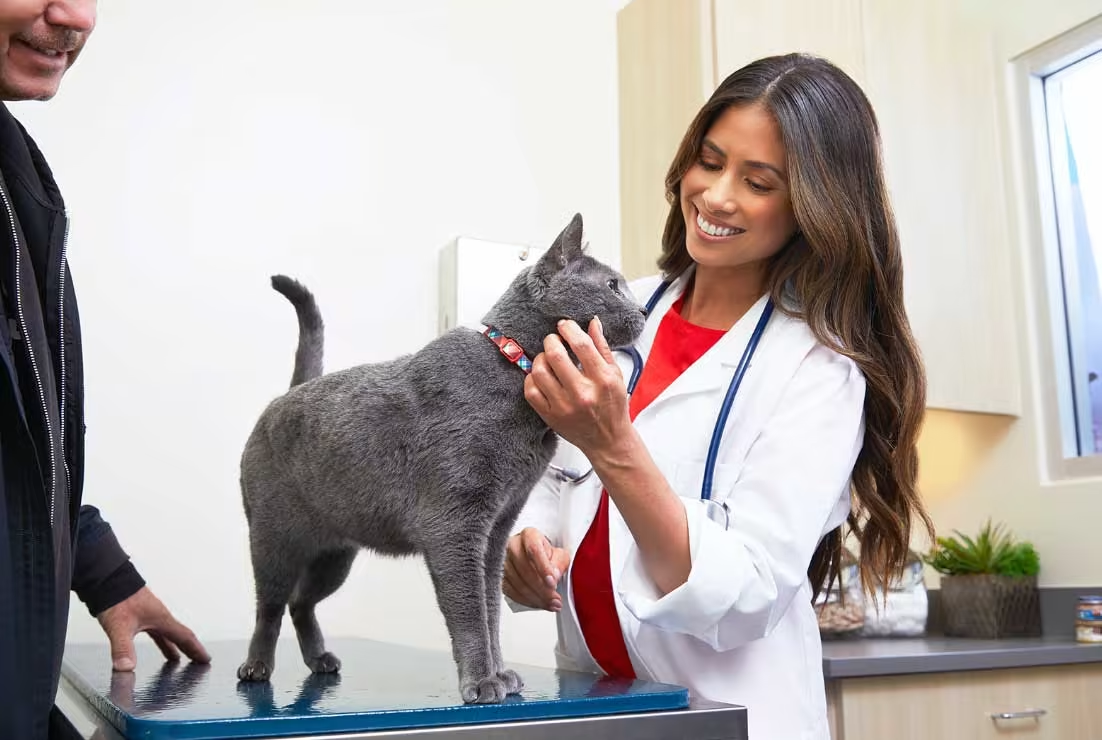Gabapentin Usage, Dosage and Side Effects for Dogs and Cats
Gabapentin Usage, Dosage and Side Effects for Dogs and Cats
If your pet has chronic pain concerns such as arthritis or has recently had a surgical procedure, your veterinarian may prescribe gabapentin to help make them more comfortable. Gabapentin is commonly used in dogs for pain control, but it may also be prescribed as a calming agent or to help with seizure disorders. Gabapentin may also be recommended for your cat, but it’s prescribed more rarely for them compared to dogs.
Gabapentin—also known by the brand names Neurontin, Aclonium and Equipax—is not suitable for every dog and cat. For instance, it’s not usually prescribed for pregnant animals. Read on to learn when your vet may prescribe this drug and what to expect when your pet takes it.
What is Gabapentin?
Gabapentin is a pharmaceutical drug that may be prescribed to your dog or cat by a veterinarian after a thorough physical exam.
The primary use of gabapentin for dogs and cats is to help reduce pain, specifically chronic or acute nerve pain. Gabapentin is also used as an anticonvulsant to help control seizure disorders in dogs and cats.
Although no one in the veterinary or pharmaceutical industries knows precisely how gabapentin works in pets, the most common theory is that the drug inhibits the release of excitatory neurotransmitters in the brain. However it works, it appears to calm specific parts of the brain and helps relieve pain in many different animals.
Gabapentin is usually administered every eight to 12 hours. The medication will typically start to take effect within one to two hours, so you should plan your dose appropriately if you want it to take effect before traveling with your pet. What is Gabapentin Used for in Pets?
Gabapentin was initially created for use in humans, but it has since been introduced into veterinary medicine. It’s often considered an extra-label drug, which means the instructions required for your pet’s use may differ from those on the manufacturer’s label. Your vet will assess the other drugs your pet is on and give you personalized guidelines for dosage and scheduling.
As mentioned above, an exam is required before prescribing gabapentin, as some cats and dogs may not be good candidates for it. Pets who are pregnant, lactating or experiencing concurrent diseases may need an alternative solution.
Your veterinarian may suggest gabapentin for the following issues:
- Preventing Seizures Because it can help reduce convulsions, gabapentin can be used to help control seizures in dogs and cats. Note that this drug is typically used as adjunctive therapy, meaning that it supports another primary treatment. Your vet may suggest a gabapentin dosage if your pet’s current seizure medication is not effective on its own.
- Pain Control Gabapentin is most commonly used to help relieve pain in dogs and sometimes cats. It can be used for acute, chronic and neuropathic pain—or pain stemming from the nervous system. Your vet may also recommend it for pets suffering from degenerative joint pain, a condition that often results from osteoarthritis. As for its use in reducing seizures, gabapentin is typically used as a supportive medication that complements a primary treatment.
- Relieving Anxiety Gabapentin may also be recommended for anxiety. This medication can be a good option for dogs and cats who experience nervousness but do not need to be completely sedated. It’s often recommended for travel, visits to the vet, moves and other stressful situations. If your pet needs to be sedated entirely, a more potent medication will probably be suggested.
Gabapentin can be used to treat all these conditions in both dogs and cats. However, there are some species-specific prescription patterns. Here are the ways in which gabapentin may be prescribed differently depending on the animal.
- Dogs Dogs are primarily prescribed gabapentin for acute or chronic pain management and seizure disorders. They are more likely than cats to be on the drug long term.
- Cats Cats are usually prescribed gabapentin for anxiety. Your cat may receive a prescription for this drug for specific stressful situations that have caused them anxiety in the past.
Gabapentin Dosage Guidelines
The appropriate dose for your dog or cat depends on a few different factors. If you have a prescription for one pet in your home, it’s usually not recommended to use the same pills for another animal.
When it comes to gabapentin for dogs, dosage may be higher than for cats, who tend to be smaller. Gabapentin dosage for both cats and dogs depends on:
- Weight This is the primary consideration for gabapentin dosage. The dosage range varies widely, so your vet will determine what dose is best for your pet . Your vet will probably start with a conservative dose and increase it later if needed.
- Purpose Your vet will also consider why the dose is being administered. When used for pain management, milligrams per kilogram may be slightly higher than when the drug is used for situational anxiety.


Comments
Post a Comment